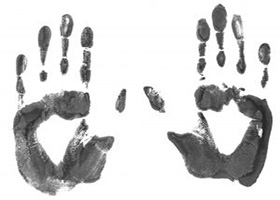


That’s less than half the story suggests Harry Markopolos, the dogged options trader who tried to blow the whistle on Madoff a decade ago and recently documented his efforts in the book No One Would Listen. Markopolos first brought evidence of fraud to the Boston office of the Securities and Exchange Commission in 2000. He had a reason: Madoff was stealing his clients. And he had a suspicion, which, given some basic math, took all of five minutes to evaluate.
Markopolos was in Toronto earlier this week as the keynote speaker at the Exchange Traded Forum, organized by Radius Financial Education.
“We assumed the SEC was competent and would do their job and would stop Bernie Madoff once we turned in the information we had available to us.” The SEC failed to act. In retrospect, Markopolos concludes, it was because they needed “legal standards of proof.” But that is a low standard, he says, and suggests that lawyers went to law school because “they couldn’t pass the GMATs. If they were good at math, they would have gone into finance: it pays better.”
Since Markopolos ran similar strategies, he knew the math wasn’t right.
Madoff was generating 16% annualized gross returns – 12% net – with positive results 96% of the time over an 18-year period. All upside and no downside. And his correlation to the reference index wasn’t 100% or even 50%, as one might expect in a put/call strategy. It was 6%. In a billion-dollar market, he was trading several times the total market size. Moreover, he only traded for three days to three weeks every month – the rest of the time he was in Treasury bills, whose yields were considerably less than 16%.
“Why didn’t anyone ask questions. He was one of the few managers who were up in the fall of 2008,” Markopolos notes. “If you see something like this, it should scream Ponzi.”
Madoff had two types of investors, Markopolos thinks. The first were capital gains investors, happy to see their returns compounded at 12% a year. The second were income investors, exultant to see 12% cheques every month. Since no one really knows where all the money went – it was booked at $65 billion when Madoff turned himself in – its not clear how much the capital-appreciation investors sent to the income investors.
Many of those capital-appreciation investors would have been brought in by feeder funds – hedge fund of fund providers. Given Madoff’s improbable returns, the key question is “what passed for due diligence in the industry? Probably not a heck of a lot.”
In the course of his investigation, Markopolos and his team did track down some of these feeder funds – there’s an estimated 339, of whom there were only 79 in the U.S., as against more than 700 U.S. FoF providers. The bulk were in Europe.
“My team and I, we saw these feeder fund operators across the world when they were smart, before they developed Alzheimer’s, before they developed memory loss, before they became victims. We saw them in their natural state as predators preying against others.”
They were Madoff’s accomplices – and well paid at that. While Madoff took home 1% of the management fees, the feeder funds earned 4% – but only by swearing omerta.
Markopolos recounts how one fund of fund manager dissembled his involvement with Madoff.
“He said ‘I have five different strategies, I do private equity, I do long/short, convertible arb, distressed debt, some venture cap’ and the reality was that it was all Bernie all the time — 100% Bernie.”
The funds of funds who invested in Madoff Markopolos indicts as “bald-faced liars, crooks and charlatans – and that’s just the nice things you can say about them.”
But there are enough of them. Of the funds of funds that provided Madoff capital in America, 10% are in the morgue. Of those in Europe, the range is 10% to 35%. The higher numbers are in Switzerland and Italy – and in Brazil.
What would be in it for a Swiss fund of hedge funds to invest in a U.S. hedge fund company that they hadn’t done due diligence on? In a word: secrecy. “The clients are fee-insensitive. They don’t care about performance — just don’t tax us,” Markopolos suggests.
And some Swiss FoFs obliged. Now, after Madoff, “this is like an atomic bomb going off in Geneva.” The fund of funds industry has been, rightly, decimated.
Still, Markopolos leaves a due diligence point worth consideration. “Why would you go to Switzerland to have someone manage your money rather than go to Toronto. What can they offer that you can’t?”
